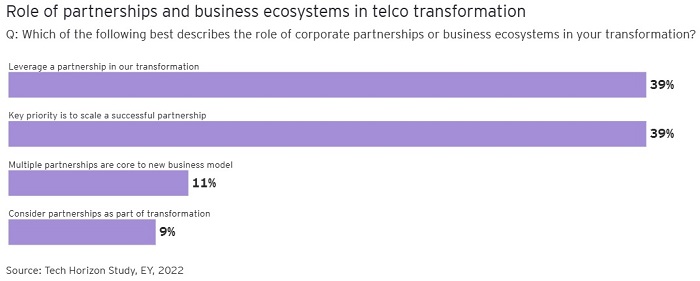- Security function undermined by weak relationships with wider business
- Response to cost-of-living is entrant at No.1 on Top 10 telecoms risk radar

The rise in the cost-of-living has driven consumers to readjust spending priorities. Telcos’ failure to respond to this changing mindset is now the biggest threat facing the industry, according to the annual EY report, Top 10 risks in telecommunications 2023. With consumer spending under increasing pressure, EY research from 2022 shows that 60% of households are worried about rising broadband subscription prices, and nearly half (45%) believe they overpay for content services.
The Top 10 risks included in the 2023 report are:
- Insufficient response to customers during the cost-of-living crisis
- Underestimating changing imperatives in security and trust
- Failure to improve workforce culture and ways of working
- Poor management of sustainability agenda
- Inability to accelerate efficiencies through digitization
- Failure to establish infrastructure resilience and reach
- Failure to take advantage of new business models
- Failure to maximize value of infrastructure assets
- Ineffective engagement with external ecosystems
- Inability to adapt to changing regulatory landscape
While network reliability remains a consumer pain point, infrastructure resilience and reach has fallen from No. 1 in the ranking for the first time since the onset of the COVID-19 pandemic – now at fifth position as other challenges become even more pressing.
Tom Loozen, EY Global Telecommunications Leader, said, “While connectivity represented a lifeline for many during the height of the pandemic, the landscape has changed. In today’s economic climate, consumers are hyper-focused on the value they’re getting from telecoms providers, and telcos ignore this shift at their peril. The threat is compounded by increasing pressure from regulators, with some demanding that telcos do more to offer consumers ‘social tariffs.’ In response, telcos must create clear, simple and secure propositions that reassure and appeal to customers.”
Susanna Lim, Partner, Ernst & Young Consulting Sdn Bhd, observes that a similar development is taking place in Malaysia and Southeast Asia.
“Due to the high inflation rates, customers are expected to be more sensitive to pricing. Telcos are likely to engage in an ongoing pricing competition to protect and increase their market share, and the profitability of telcos is now even more critical for both players and stakeholders,” she said.
She highlights the introduction of a new baseline discounted prepaid data plan that costs RM5 per month, by the Malaysias Government, called the ‘Unity Package’.
“This package aims to increase the accessibility of the internet while simultaneously lowering the cost of living for individuals in the lower-income group, particularly the bottom-40 (B40) economic group, veterans, persons with disabilities (PwDs) and senior citizens,” she explained.

Telcos struggle to keep pace with cyber risk
Underestimating changing imperatives in security and trust has risen from third to second place on the 2023 telecommunications risk radar, with 76% of telcos reporting a rise in cyber attacks year-on-year according to EY Global Information Security Survey 2021.
Among the noteworthy findings from the Information Security Survey:
- A disconnect has emerged between heightened levels of vulnerability and board-level scrutiny, and 39% of telecoms chief information security officers (CISOs) believe security is not adequately considered as part of strategic investments.
- Further, the security function is being undermined by inadequate relationships with the wider business, despite its growing prominence during the COVID-19 pandemic (noted by 58% of telecoms CISOs). Less than a third (31%) of CISOs believe their relationships with product development teams are grounded in moderate or high levels of trust.
- This is compounded by increasing anxiety among consumers, for whom the COVID-19 pandemic has exacerbated pre-existing fears around data disclosure. Indeed, 46% of consumers believe that it is impossible to keep their personal data secure when using the internet.
Sustainability reporting has stalled
The report also finds that poor management of the sustainability agenda is becoming an increasingly urgent threat to the industry, rising from fifth position last year to fourth place on the 2023 ranking. The quality of telecoms operators’ climate change disclosures has declined year-on-year, and 39% of respondents do not disclose a specific net-zero strategy, transition plan or decarbonization strategy – despite growing calls for tangible action from all stakeholders.
Customer expectations in the sustainability domain are intensifying, putting pressure on operators to keep pace. 39% of consumers say connectivity providers need to do more to address sustainability concerns, and 68% of large enterprises are more interested than before in 5G use cases that can help meet sustainability goals.
“Despite being the largest energy consumers, telcos have yet to make significant progress towards advancing the sustainability agenda. Looking ahead, they must recognize their pivotal role as agents for creating a more sustainable society and take appropriate action,” Susanna said

Talent turnover remains key risk
At third position for the second consecutive year on the 2023 telecommunications risk radar, failure to improve workforce culture and ways of working is an evolving risk as the views of employers and employees continue to diverge.
Results from the 2022 EY Work Reimagined survey clearly show this divergence. While 91% of technology, media & entertainment, and telecoms (TMT) employees want to work remotely for two or more days per week, 25% of TMT management teams believe their people should return to the office five days a week. Alarmingly, workforce churn is a greater threat in TMT: 53% of TMT employee respondents say they plan to leave their current role in the next 12 months, compared with an average of 43% across all sectors
For Malaysia, Susanna believes that telcos need to enhance their talent attraction and retention strategies. “The average age of Malaysia’s telco workforce is much older today, and with it means a likelihood of a lower turnover rate with this group. That said, the key talent imperative for telcos players is to attract and retain young talent with digital capabilities to build the future of telco together.”

